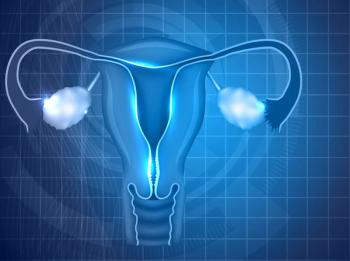
Noninferiority of Neoadjuvant Chemo Cannot Be Confirmed in Ovarian Cancer Trial
The noninferiority of neoadjuvant chemotherapy vs upfront surgery could not be confirmed with regard to overall survival in patients with ovarian, tubal, and peritoneal cancers.
The noninferiority of neoadjuvant chemotherapy (NACT) compared with upfront primary debulking surgery (PDS) could not be confirmed with regard to overall survival (OS) in patients with stage III/IV ovarian, tubal, and peritoneal cancers, according to a new study. The results (
“Two preceding studies…comparing PDS and NACT for ovarian, tubal, and peritoneal cancers demonstrated noninferiority of NACT,” said Takashi Onda, MD, PhD, of Kitasato University School of Medicine in Japan. His group has already reported reduced invasiveness of the NACT approach, with a reduced number of surgeries, reduced median operation time, reduced blood loss, and other parameters.
The new study aimed to confirm the noninferiority of NACT in terms of OS. It included 301 patients with stage III/IV ovarian, tubal, or peritoneal cancers, randomized to receive NACT (152 patients) or to undergo PDS (149 patients). The PDS patients subsequently received 8 cycles of paclitaxel and carboplatin; the NACT group received 4 cycles of that regimen, followed by interval debulking surgery (IDS) and then 4 subsequent cycles of the same regimen. Just under 70% of both groups had stage III disease, and the median age was approximately 60 years.
Complete resection, with no residual tumor, was achieved in 11.6% of PDS patients, and in 63.8% of the NACT patients who underwent IDS.
The median OS was 49.0 months with PDS, and 44.3 months with NACT, for a hazard ratio (HR) of 1.05 (90.8% CI, 0.83–1.33; P = .24). The median progression-free survival was 15.1 months and 16.4 months, respectively, for an HR of 0.96 (95% CI, 0.75–1.23).
Surgical performance was worse in institutions with low study activity, but patients in those institutions also had poorer baseline characteristics, including a lower serum albumin level.
“Noninferiority of NACT compared with PDS was not confirmed in OS,” Onda said. “NACT cannot always be a substitute for PDS in first-line treatment of advanced ovarian, tubal, and peritoneal cancer,” in particular in those in poor general condition. “Further studies, especially concerning aggressive surgery, may be necessary to demonstrate a role of NACT.”
Ginger J. Gardner, MD, of Memorial Sloan Kettering Cancer Center in New York, was the discussant for the session. “Calling out the surgical resection rate as a reflection of institutional volume is an important lesson for all of us, as we seek to analyze and further our experience in surgical trials,” she said. She added that the 8 cycles of chemotherapy used in both arms of this trial is more than the 6 cycles used in other trials that did show noninferiority, which could maximize the advantage of primary surgical resection.
Gardner also noted that the international TRUST trial is now accruing patients, comparing upfront surgery with neoadjuvant therapy, and this will hopefully provide some further clarity on the issue.
Newsletter
Stay up to date on recent advances in the multidisciplinary approach to cancer.

















































































